Do you have a question about the HERO Splendor iSmart 110 and is the answer not in the manual?
Essential actions for safe motorcycle operation.
Actions to avoid for safe motorcycle operation.
Guidelines for adding accessories to the motorcycle.
Advice against altering the motorcycle's original design.
Recommendations to prevent motorcycle theft.
Identification of controls and parts from the top view.
Identification of controls and parts from the left side view.
Identification of controls and parts from the right side view.
Explanation of dashboard instruments and indicator lights.
Details on odometer, tripmeter, and service reminder functions.
Operation of the seat lock and helmet hanger.
Explanation of ignition switch positions and functions.
Description of controls on the left handlebar.
Description of controls on the right handlebar.
Explanation of the i3s system operation and functions.
Instructions for locking the steering.
Functionality of the side stand indicator and switch.
Operation of the three-way fuel valve.
Details on fuel tank capacity and cap operation.
Procedure for checking and topping up engine oil.
Procedure for draining and replacing engine oil.
Recommended tyre sizes and air pressure guidelines.
Information on tyre wear indicators and tyre direction.
Guidelines for maintaining correct tyre air pressure.
Advice on tyre repair and replacement procedures.
Essential checks before riding the motorcycle.
Guidance on starting, shifting gears, and acceleration.
Precautions for the initial 1000 km of operation.
Proper techniques for braking.
Instructions for parking the motorcycle and contents of the tool kit.
Precautions to take during maintenance and repair.
Step-by-step guide to starting the engine.
General guidelines and schedule for motorcycle maintenance.
Procedure for cleaning the oil filter screen and centrifugal filter.
How to inspect, gap, and replace the spark plug.
Steps for removing and replacing the air cleaner element.
Checking and adjusting throttle cable free play.
Procedure to check and adjust valve clearance.
Adjusting the carburetor idle speed.
How to adjust the clutch lever free play.
Checking chain slack and adjusting it.
Procedure to adjust front brake lever free play.
Procedure to adjust rear brake pedal free play.
How to check brake shoe wear using indicators.
Adjusting the stop lamp switch for proper function.
Checking the side stand and its indicator.
Location and type of the motorcycle battery.
How to adjust the headlamp beam vertically.
Inspecting the front and rear suspension for proper function.
Steps for removing and installing the front wheel.
How to adjust the rear shock absorbers for ride conditions.
Steps for removing and installing the rear wheel.
Recommended steps for washing the motorcycle safely.
Guidelines to protect the catalytic converter's function.
Explanation of the air suction valve's role in emissions.
Steps to diagnose and fix engine starting issues.
Diagnosing and resolving poor engine performance.
Troubleshooting common electrical faults.
Diagnosing issues with the i3s system.
List of jobs performed during periodic services.
Log for recording free and paid services performed.
Advice for replacement of wear and tear components.
Section to record owner and motorcycle details.
Essential actions for safe motorcycle operation.
Actions to avoid for safe motorcycle operation.
Guidelines for adding accessories to the motorcycle.
Advice against altering the motorcycle's original design.
Recommendations to prevent motorcycle theft.
Identification of controls and parts from the top view.
Identification of controls and parts from the left side view.
Identification of controls and parts from the right side view.
Explanation of dashboard instruments and indicator lights.
Details on odometer, tripmeter, and service reminder functions.
Operation of the seat lock and helmet hanger.
Explanation of ignition switch positions and functions.
Description of controls on the left handlebar.
Description of controls on the right handlebar.
Explanation of the i3s system operation and functions.
Instructions for locking the steering.
Functionality of the side stand indicator and switch.
Operation of the three-way fuel valve.
Details on fuel tank capacity and cap operation.
Procedure for checking and topping up engine oil.
Procedure for draining and replacing engine oil.
Recommended tyre sizes and air pressure guidelines.
Information on tyre wear indicators and tyre direction.
Guidelines for maintaining correct tyre air pressure.
Advice on tyre repair and replacement procedures.
Essential checks before riding the motorcycle.
Guidance on starting, shifting gears, and acceleration.
Precautions for the initial 1000 km of operation.
Proper techniques for braking.
Instructions for parking the motorcycle and contents of the tool kit.
Precautions to take during maintenance and repair.
Step-by-step guide to starting the engine.
General guidelines and schedule for motorcycle maintenance.
Procedure for cleaning the oil filter screen and centrifugal filter.
How to inspect, gap, and replace the spark plug.
Steps for removing and replacing the air cleaner element.
Checking and adjusting throttle cable free play.
Procedure to check and adjust valve clearance.
Adjusting the carburetor idle speed.
How to adjust the clutch lever free play.
Checking chain slack and adjusting it.
Procedure to adjust front brake lever free play.
Procedure to adjust rear brake pedal free play.
How to check brake shoe wear using indicators.
Adjusting the stop lamp switch for proper function.
Checking the side stand and its indicator.
Location and type of the motorcycle battery.
How to adjust the headlamp beam vertically.
Inspecting the front and rear suspension for proper function.
Steps for removing and installing the front wheel.
How to adjust the rear shock absorbers for ride conditions.
Steps for removing and installing the rear wheel.
Recommended steps for washing the motorcycle safely.
Guidelines to protect the catalytic converter's function.
Explanation of the air suction valve's role in emissions.
Steps to diagnose and fix engine starting issues.
Diagnosing and resolving poor engine performance.
Troubleshooting common electrical faults.
Diagnosing issues with the i3s system.
List of jobs performed during periodic services.
Log for recording free and paid services performed.
Advice for replacement of wear and tear components.
Section to record owner and motorcycle details.
| Fuel System | Carburetor |
|---|---|
| Transmission | 4-speed constant mesh |
| Front Suspension | Telescopic Hydraulic Shock Absorbers |
| Rear Brake | Drum |
| Fuel Tank Capacity | 9.5 liters |
| Frame Type | Diamond Type |
| Overall Length | 2015 mm |
| Ground Clearance | 160 mm |
| Engine Type | Air cooled, 4 Stroke Single Cylinder OHC |
| Rear Suspension | Swing Arm with Hydraulic Shock Absorbers |
| Front Brake | Drum |
| Bore x Stroke | 50.0 mm x 55.6 mm |
| Compression Ratio | 10:1 |
| Ignition | CDI |
| Starting | Kick and Self Start |
| Clutch | Wet Multi Plate |
| Front Tyre | 80/100-18 47P (Tubeless) |
| Rear Tyre | 80/100-54P Tubeless |
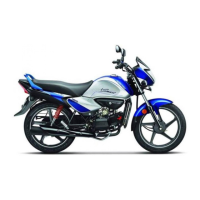
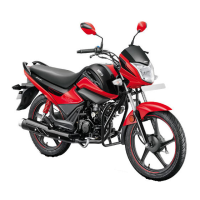
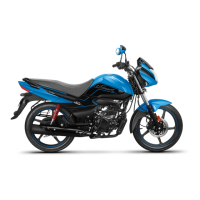
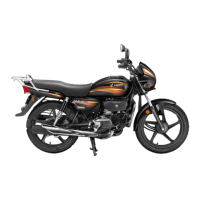
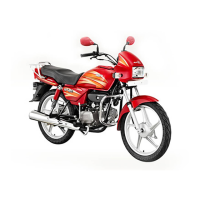
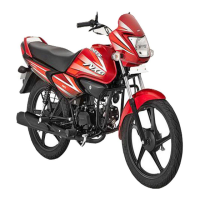
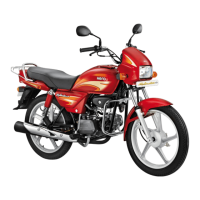
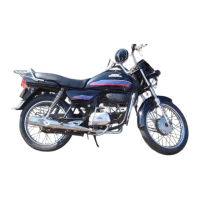
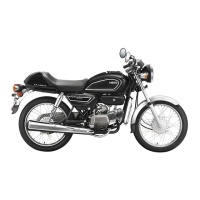

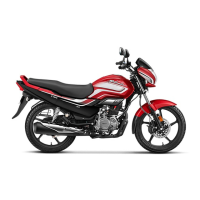
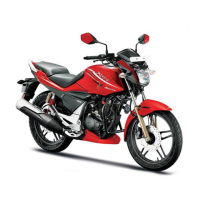
